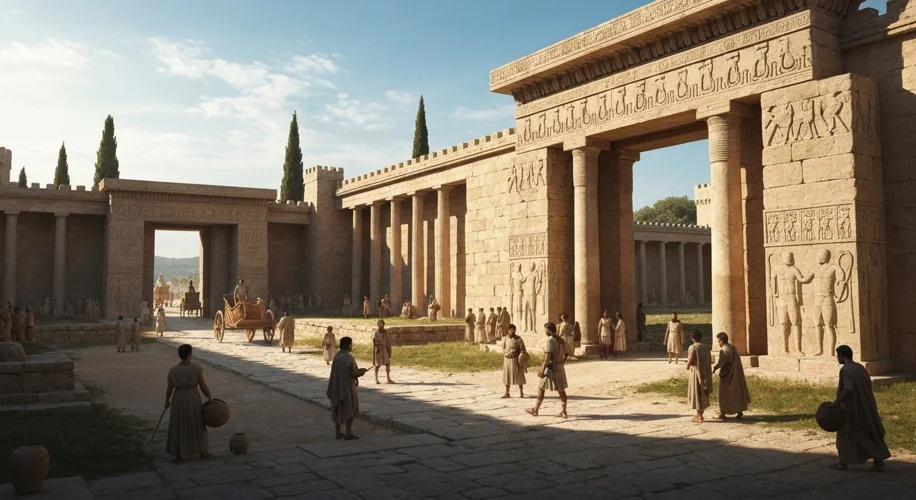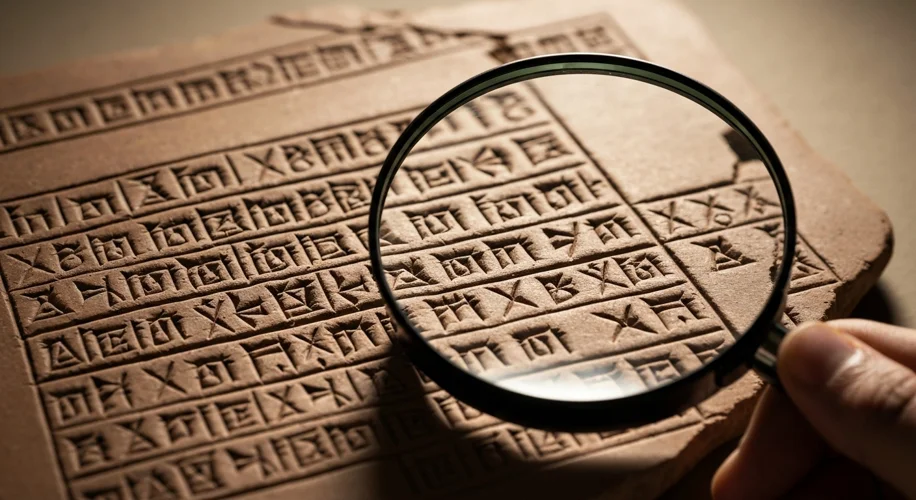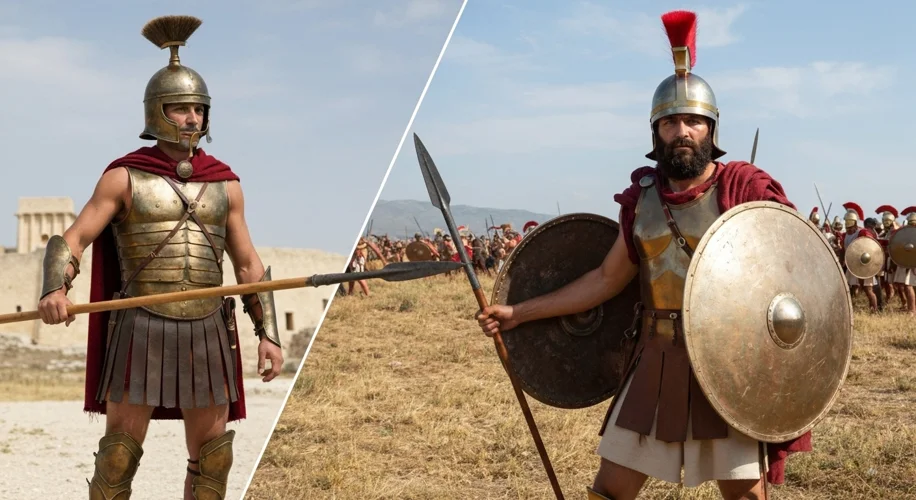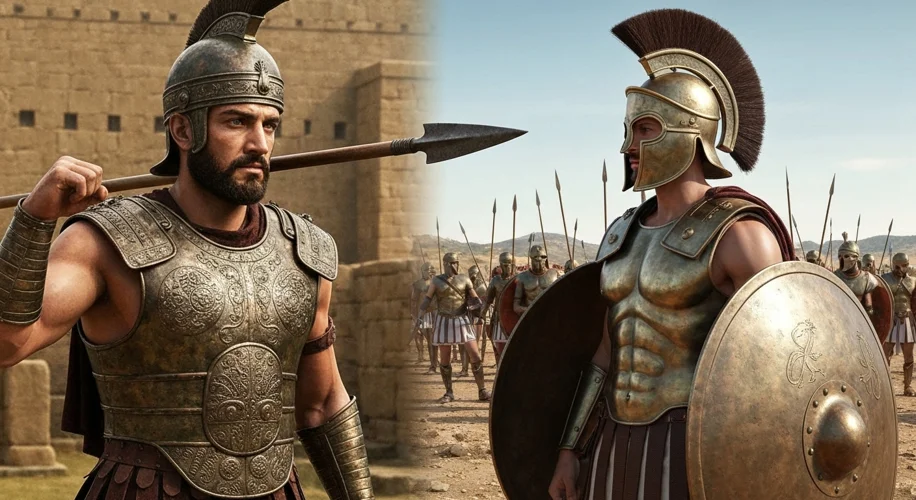Consider this: the year is 1952. For decades, archaeologists had been unearthing the remnants of a glorious, yet enigmatic civilization – the Mycenaeans. Their imposing palaces, their intricate pottery, their warrior culture – all spoke of a sophisticated society that dominated the Aegean world during the Late Bronze Age, roughly from the 15th to the 13th centuries BCE.

But one crucial piece of the puzzle remained stubbornly out of reach: their script. Known as Linear B, it was found inscribed on clay tablets unearthed from sites like Mycenae, Tiryns, and especially Knossos on Crete. These tablets, often baked hard by the fires that consumed the palaces, offered tantalizing glimpses into Mycenaean administration, economy, and religion, listing everything from chariot wheels and bronze ingots to religious offerings and personnel. Yet, the script itself was a complete mystery. Scholars had puzzled over it, comparing it to other ancient scripts, but its meaning remained elusive. The air hung heavy with the scent of the past, but its voice was silent.
The prevailing assumption for many years was that Linear B represented a non-Greek language. After all, Greece was still centuries away from the classical period, and the Minoan civilization, with its own script, Linear A, had preceded the Mycenaeans in Crete. Many believed Linear B was a derivative of Linear A, or perhaps a related but distinct tongue.
Then came Michael Ventris, a brilliant British architect with an uncanny knack for codes and languages. Ventris wasn’t a professional linguist, but he possessed a deep, almost obsessive, fascination with Linear B. He joined forces with Alice Kober, an American scholar whose meticulous cataloging of recurring symbol combinations and word patterns in Linear B had laid crucial groundwork. Kober had identified potential grammatical endings and, by painstakingly mapping the variations, had begun to discern a possible syllabic structure, but she never lived to see the full decipherment.
Ventris, building upon Kober’s work and making his own intuitive leaps, focused on the distribution of symbols and the limited phonetic values he suspected they represented. He was particularly intrigued by the place names appearing in the Knossos tablets. He hypothesized that if Linear B was indeed related to Greek, then certain place names known from later Greek history might appear in the Mycenaean records, perhaps with slight variations.
Consider this: Ventris, late into the night, hunched over his notes, surrounded by grids of symbols and phonetic possibilities. He tested various assumptions, trying to match the patterns he observed with the sounds and structures of known languages. The breakthrough came when he tentatively assigned phonetic values to certain symbols, treating them as syllabic signs – a syllable represented by a single symbol. He cross-referenced these with his hypothesis about Greek place names.
Little did he know, he was on the cusp of a revelation that would rewrite history. The crucial moment arrived when he applied his tentative phonetic values to a particular tablet listing items and locations. The symbols, when read with his assigned sounds, began to form recognizable Greek words, including place names like Knossos, Pylos, and even Mycenae itself. The language wasn’t some exotic, unknown tongue; it was an early dialect of Greek, specifically Mycenaean Greek.
The implications were staggering. It meant that Greek civilization, and the Greek language, had a much deeper history than previously understood. The Mycenaean era, once thought to be a precursor to Greek culture, was now definitively identified as the earliest documented phase of Greece itself. The world of Homer’s epics, long considered semi-mythical, was suddenly anchored in a tangible, literate past.

The decipherment of Linear B wasn’t just an academic exercise; it was an act of resurrection. It brought the voices of the Mycenaeans out of silence, allowing us to understand their society with unprecedented clarity. We learned about their extensive bureaucracy, their specialized craft industries, their organized military, and their complex religious practices. The tablets revealed that Linear B was primarily an administrative tool, used for record-keeping within the palace economies, much like cuneiform scripts were used in Mesopotamia and Egypt.
However, Linear B was eventually superseded by the Greek alphabet, which developed later. The Bronze Age Collapse, a catastrophic event around 1200 BCE that saw the destruction of many Mycenaean centers and the decline of their complex society, led to a period known as the Greek Dark Ages. During this time, literacy, at least in the form of Linear B, seems to have been lost, only to be rediscovered centuries later with the advent of the Phoenician-inspired alphabet.
Michael Ventris’s achievement, achieved in collaboration with Alice Kober and others, fundamentally altered our perception of ancient Greece. It bridged a crucial gap in our understanding, connecting the shadowy Mycenaean world with the glorious civilization of classical Greece. The silent clay tablets had finally spoken, revealing a vibrant, organized, and distinctly Greek society that had flourished millennia ago. The echo of their words continues to resonate, reminding us that history is a constant process of discovery, and that even the most enigmatic past can be brought to life through dedicated scholarship and a touch of inspired genius.


